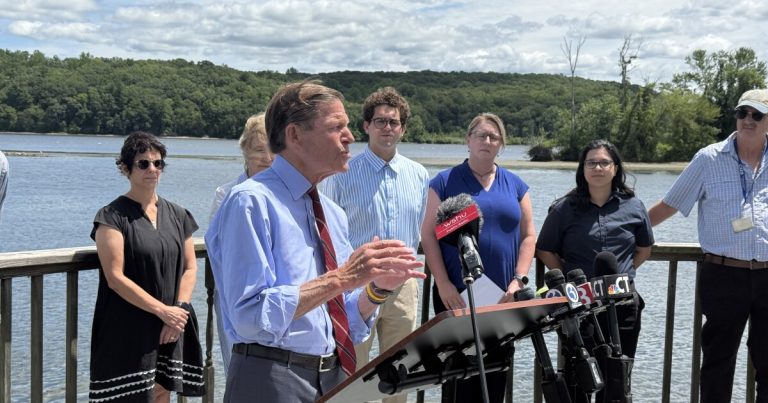Connecticut Confronts Invasive Hydrilla with Targeted Herbicide Application Amid Misinformation Concerns
HARTFORD, CT – A coalition of state officials, environmental organizations, and concerned citizens gathered on the banks of the Connecticut River Friday to address the growing threat of hydrilla, an invasive aquatic plant rapidly infesting the state’s waterways. The coalition also sought to counter a wave of misinformation surrounding the use of Diquat, a herbicide being tested as a potential control measure. Senator Richard Blumenthal (D-CT) led the charge, emphasizing the need for accurate information and decisive action to protect Connecticut’s fragile ecosystems.
Hydrilla, an aggressive aquatic plant native to Asia, poses a significant threat to native plant life, fish populations, and overall water quality. Its rapid growth rate allows it to form dense mats on the water’s surface, effectively choking out native species, hindering recreational activities, and disrupting the delicate balance of aquatic ecosystems. The urgency of the situation has prompted state officials to explore various control methods, including the carefully controlled application of herbicides.
The pilot study employing Diquat, a registered aquatic herbicide, aims to determine its effectiveness in eradicating hydrilla infestations. Researchers are meticulously evaluating its impact on the target plant while minimizing potential risks to non-target species and the surrounding environment. This cautious approach prioritizes the long-term health of the Connecticut River and other affected waterways.
The gathering aimed to dispel misinformation surrounding Diquat’s use, which has been fueled by social media posts and foreign press reports referencing the herbicide’s application in vastly different agricultural contexts. These reports, while raising legitimate concerns about large-scale agricultural spraying, do not accurately reflect the targeted application being employed in Connecticut. Alicia Charamut of the Rivers Alliance of Connecticut emphasized this distinction, stating that the controlled application in aquatic environments is significantly different from the blanket spraying practices described in the misleading reports.
The controversy surrounding Diquat gained momentum following public statements by Connecticut-based rapper Chris Webby, who expressed concerns about the herbicide’s use and launched a petition urging state officials to halt the pilot study. Webby’s concerns, although well-intentioned, have contributed to the spread of misinformation and heightened public anxiety.
In response to growing public concern, Senator Blumenthal, state lawmakers, and environmental groups reiterated their support for the controlled application of Diquat, stressing the importance of scientific evidence and responsible environmental stewardship. They emphasized that hydrilla, if left unchecked, poses a far greater ecological threat than the carefully managed use of herbicides. The coalition stressed that inaction could lead to irreversible damage to Connecticut’s waterways, impacting biodiversity, recreational opportunities, and the overall health of the ecosystem. They urged the public to rely on credible sources of information and to support science-based solutions to this pressing environmental challenge. The long-term goal, they emphasized, is to restore the ecological balance of Connecticut’s waterways and ensure their health and vitality for generations to come. This will require a collaborative effort involving scientists, policymakers, and the public, all working together to address the hydrilla threat responsibly and effectively.


